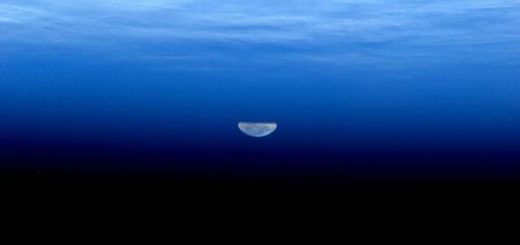The best place to see stars from Earth also happens to be the coldest place on the planet

If you want the clearest view of the night sky, you’ll have to pack a warm jacket.
Dome A, or Dome Argus, an ice dome perched high on the Antarctic Plateau, could be the ideal place to get a clear view of the stars from Earth, according to a new study conducted by an international team of researchers. A telescope situated at that remote location, thought to be the naturally coldest place on Earth, could reveal clearer, better night sky views than the same telescope located anywhere else.
“A telescope located at Dome A could out-perform a similar telescope located at any other astronomical site on the planet,” University of British Columbia astronomer Paul Hickson, a co-author of the study, said in a statement.
“The combination of high altitude, low temperature, long periods of continuous darkness, and an exceptionally stable atmosphere makes Dome A a very attractive location for optical and infrared astronomy. A telescope located there would have sharper images and could detect fainter objects,” Hickson said.
The chilly location, which is about halfway between the South Pole and the eastern coast of Antarctica, about 746 miles (1,200 kilometers) inland and with an altitude of 2.5 miles (4 kilometers), makes for an ideal observing spot for a number of reasons.
For one: it has very weak turbulence. In astronomy, atmospheric turbulence can seriously reduce a telescope’s image quality. It makes stars “twinkle,” and the measurement of this effect is described as “seeing.” Less turbulence (or the lower the “seeing” measurement) is considered better, and at Dome A it is fairly low.
While observatories in locations along the equator at locations including Chile and Hawai’i have “seeing” measurements between 0.6 and 0.8 arcseconds, the Antarctic typically has much lower ranges. For example, Dome C, another Antarctic location has a “seeing” range between 0.23 and 0.36 arcseconds.
But, the authors estimate in this study, the lowest part of the atmosphere is thinner at Dome A than at Dome C. Because of this difference, the researchers calculate that Dome A has nighttime seeing ranging from 0.31 to as low as 0.13 arcseconds, which is astoundingly low.
The researchers found that the measurements taken from Dome A, which were taken at a height of 26 feet (8 meters), were much better than those from Dome C, which were taken both at 26 feet (8 meters) and even higher up at 66 feet (20 meters).
Now, with seriously frigid temperatures, frost is an issue that presents itself to astronomers looking to set up a telescope at the site. But, despite the technical difficulties that pop up when trying to make observations at a site this remote and cold, this team of researchers thinks that Dome A could lend itself to some pretty spectacular skywatching.
The researchers were able to have a telescope work in Antarctica completely automatically for seven months. They believe that other instruments could withstand the Antarctic temperatures, which have been said to fall as low as −90 °C (−130 °F) to −98 °C (−144 °F).



 Creators of mankind
Creators of mankind Description of “Tall white aliens”
Description of “Tall white aliens” Where they came from?
Where they came from? About hostile civilizations
About hostile civilizations The war for the Earth
The war for the Earth “Tall white aliens” about eternal life
“Tall white aliens” about eternal life Video: “Nordic aliens”
Video: “Nordic aliens” Aliens
Aliens Alien encounters
Alien encounters The aliens base
The aliens base UFO
UFO Technology UFO
Technology UFO Underground civilization
Underground civilization Ancient alien artifacts
Ancient alien artifacts Military and UFO
Military and UFO Mysteries and hypotheses
Mysteries and hypotheses Scientific facts
Scientific facts


















